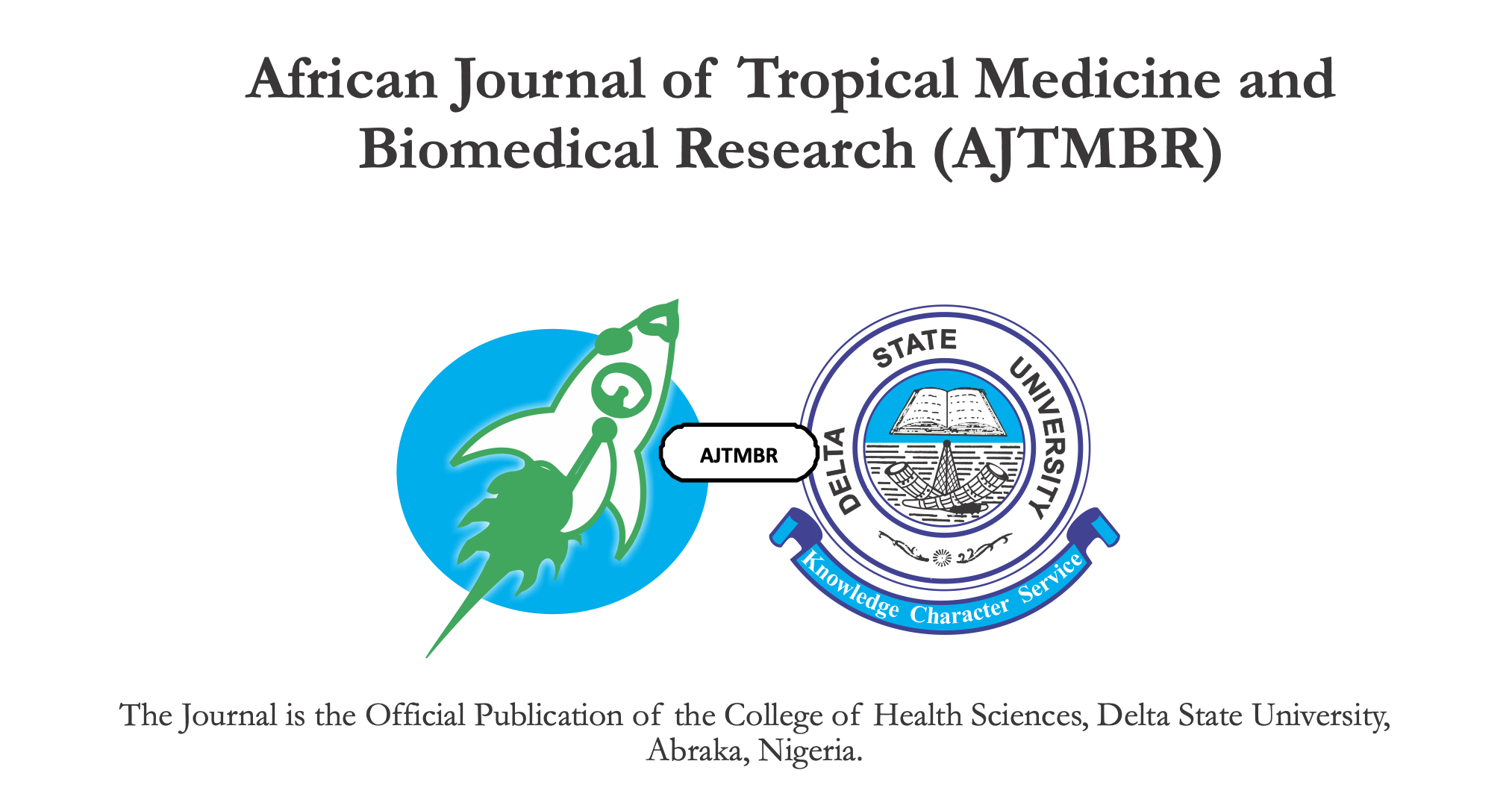Acute Kidney Injury in Adult Nigerians: A Single Centre Experience
Keywords:
Kidney InjuryAbstract
Background: Acute Kidney Injury (AKI) is an abrupt and sustained rise in serum creatinine, urine output or both. It is associated with significant morbidity and mortality especially among hospitalised patients. Despite the poor outcome associated with the problem, data is lacking regarding the epidemiology of AKI in developing countries.
Objectives: To determine the incidence of AKI among medical admissions, to study the aetiological pattern, clinical presentation, complications and short-term outcome of the disease; and to determine the predictor of poor outcome among cases studied.
Methodology: This was a retrospective study. The case records of all cases of diagnosed AKI admitted into the medical wards for a period of 2 years was reviewed. AKI was regarded as sudden deterioration in renal function (azotaemia) with or without oliguria; and the absence of any evidence of chronicity.
Results: There were 2431 Medical admissions during the study period and of these, there were 33 cases of AKI with an incidence rate of 13.5 per 1000. Patients were aged 18-95 years with a mean age of 37.4±18.6 years. The commonest presenting symptoms were fever (64.5%), leg swelling (64.5%), vomiting (54.8%) and oliguria (61.2%). 77.4% patients had proteinuria, 64.5% were anaemic while 54.8% had elevated blood pressure. The commonest cause of AKI was Sepsis (45.1%). 61.2% had haemodialysis. Mortality rate was 41.9%. Not having haemodialysis was significantly associated with poor outcome.
Conclusion: AKI is associated with significant morbidity and mortality. Late presentation and delayed or lack of access to dialysis are major difficulties encountered.
References
Uchino S, Bellomo R, Goldsmith D, Bates S, Ronco C. An assessment of the RIFLE criteria for acute renal failure in hospitalized patients. Crit Care Med.Jul 2006; 34(7): 1913-7.
Ostermann M, Chang RW. Acute kidney injury in the intensive care unit according to RIFLE. Crit Care Med. Aug 2007; 35 (8): 1837-43; quiz 1852.
Bagshaw SM, George C, Dinu I, Bellomo R. A multi-centre evaluation of the RIFLE criteria for early acute kidney injury in critically ill patients. Nephrol Dial Transplant.Apr 2008; 23(4): 1203-10.
Thadhani R, Pascual M, Bonventre JV. Acute renal failure. N Engl J Med. 1996;334:1448-1460
Xue JL, Daniels F, Star RA, Kimmel PL, Eggers PW, Molitoris BA, Himmelfarb J, Collins AJ: Incidence and mortality of acute renal failure in Medicare beneficiaries, 1992 to 2001. J Am Soc Nephrol 17: 11351142, 2006.
Waikar SS, Curhan GC, Wald R, McCarthy EP, Chertow GM: Declining mortality in patients with acute renal failure, 1988 to 2002. J Am Soc Nephrol 17: 11431150, 2006.
Liano F, Pascual J: Epidemiology of acute renal failure: A prospective, multicenter, community-based study. Madrid Acute Renal Failure Study Group. Kidney Int 50: 811818, 1996
Ali T, Khan I, Simpson W, Prescott G, Townend J, Smith W, Macleod A: Incidence and outcomes in acute kidney injury: A comprehensive population
based study. J Am Soc Nephrol 18: 9. Seedat YK, Nathoo BC: Acute renal failure in blacks and Indians in South Africa: Comparison after 10 years. Nephron 64: 198201, 1993
Noronha IL, Schor N, Coelho SN, Jorgetti V, Roma˜O et al. Nephrology, dialysis and transplantation in Brazil. Nephrol Dial Transplant 12: 22342243, 1997
Jha V, Chugh KS: Acute renal failure in the tropics. J Assoc Physicians India Suppl 2: 1823, 1997.
Bamgboye et al. Acute renal failure at LUTH: A 10 year review. Renal failure 1993;15(1): 77-80.
Anochie IC, Eke FU: Acute renal failure in Nigerian children: Port Harcourt experience. Pediatr Nephrol 20: 16101614, 2005.
Joannidis M, Metnitz PG: Epidemiology and natural history of acute renal failure in the ICU. Crit Care Clin. 2005; 21: 239- 249.
Schrier RW, Wang W: Acute renal failure: A prospective multicentre, community based study. Madrid Acute Renal failure study Group. Kidney Int. 1996; 50: 811- 818.

Downloads
Published
Issue
Section
License

This work is licensed under a Creative Commons Attribution-NoDerivatives 4.0 International License.
Key Terms:
- Attribution: You must give appropriate credit to the original creator.
- NonCommercial: You may not use the material for commercial purposes.
- ShareAlike: If you remix, transform, or build upon the material, you must distribute your contributions under the same license as the original.
- No additional restrictions: You may not apply legal terms or technological measures that legally restrict others from doing anything the license permits.
For full details, please review the Complete License Terms.



